Cracked Tooth Survival Guide: Understanding and Treating Dental Fractures
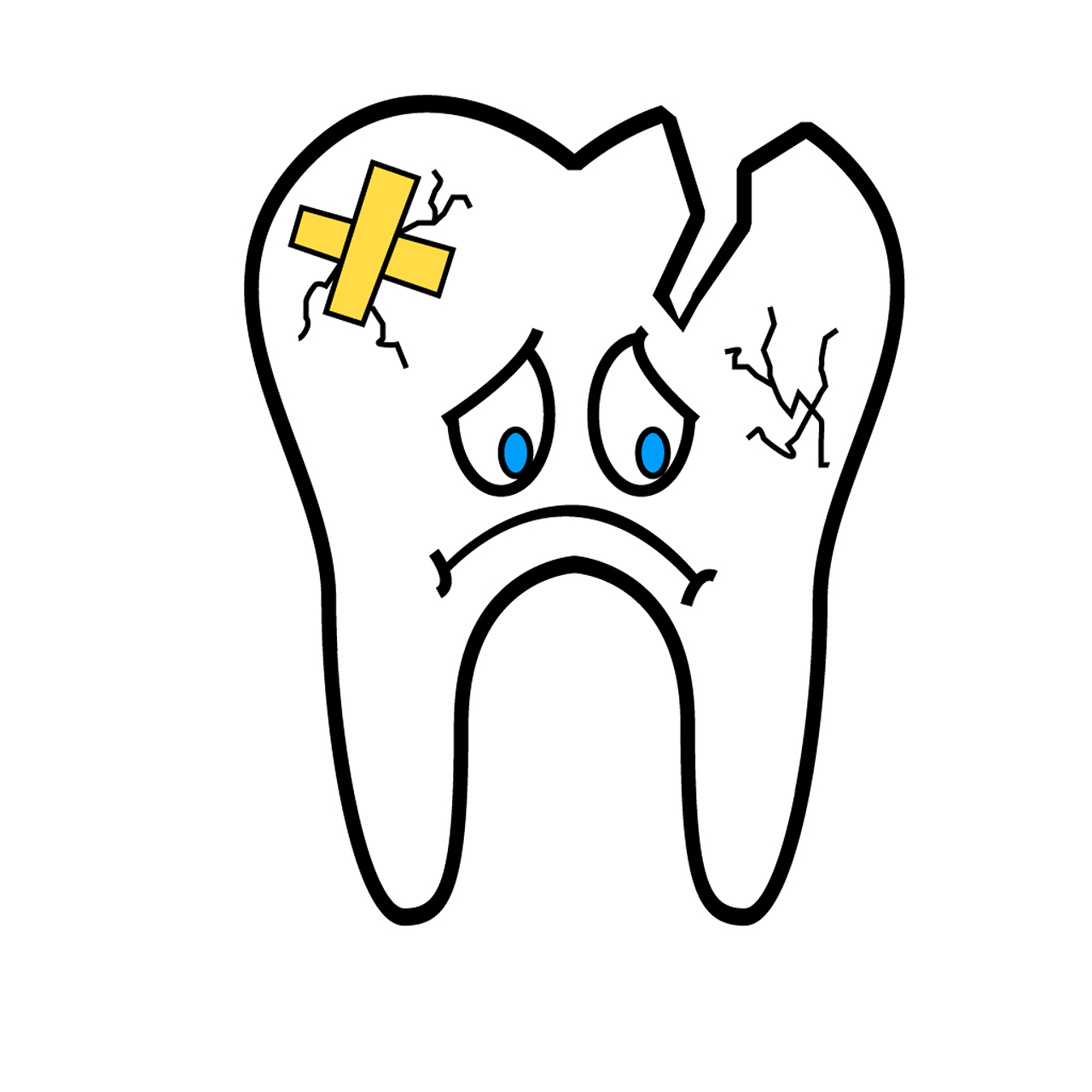 A cracked tooth is a tooth that has a crack or fracture in its enamel (the hard outer layer), dentin (the middle layer), or pulp (the soft inner layer).
A cracked tooth is a tooth that has a crack or fracture in its enamel (the hard outer layer), dentin (the middle layer), or pulp (the soft inner layer).
Cracked teeth have become more common in recent years, mainly because people are now keeping their natural teeth longer.
The more time passes, the more teeth are exposed to decay and treatment, making them more fragile and prone to cracking.
Depending on the type and severity of the injury, different treatments may be available to restore the tooth and prevent further damage.
1. Types of cracked or fractured teeth:
2. What are the first signs to look for?
3. How does the dentist diagnose cracked teeth?
4. Can a cracked tooth be repaired?
5. Complications of an untreated cracked tooth
6. How to prevent cracked teeth?
Types of cracked or fractured teeth:
Different types of cracks or fractures can affect your teeth. Some are more serious than others and require immediate attention. Here are two common types of tooth cracks:1. Horizontal fractures due to trauma:
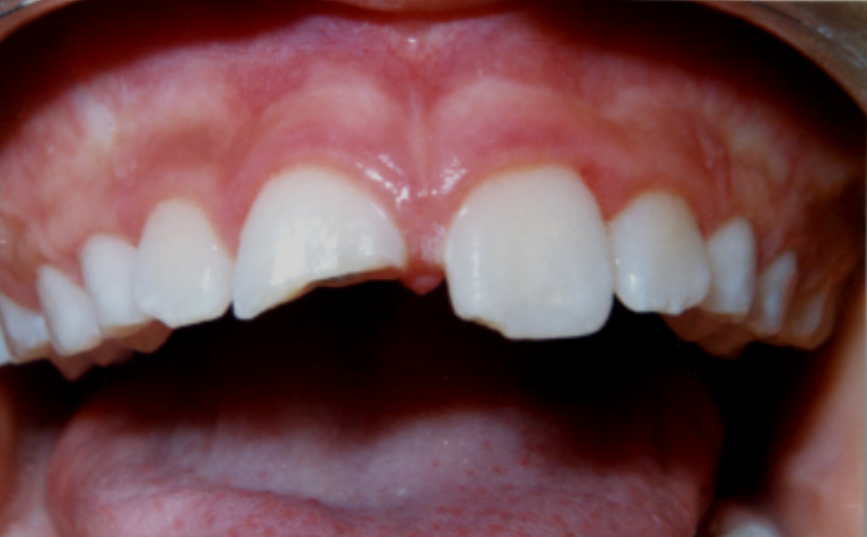
A horizontal fracture is a crack that runs across the width of the tooth. This type of fracture is often caused by a direct impact on the mouth, such as a fall, a car accident, or a sports injury. It is most common in children and adolescents and often affects the front teeth (upper incisors). This often leads to a piece of the tooth coming off. The types of horizontal tooth fractures include:
1. Enamel Fracture:
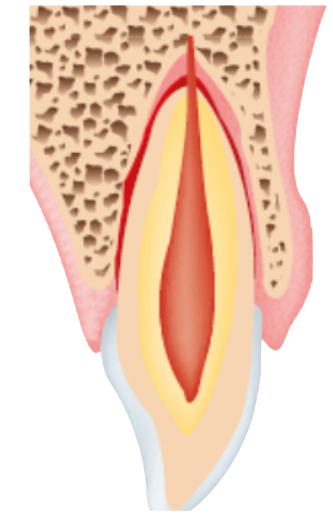
This is a crack that only affects the outer layer of the tooth (enamel). It usually does not cause any pain or sensitivity, and may not require any treatment. However, your dentist may smooth the rough edges or fill the crack with a tooth-colored resin to improve the appearance and prevent further damage.
2. Enamel-Dentin fracture:
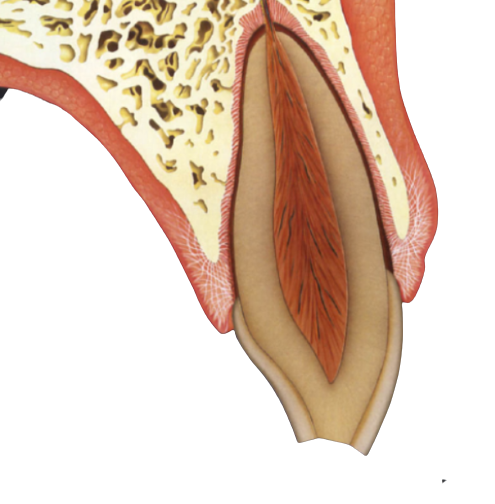
This is a crack that affects both the enamel and the dentin (the middle layer of the tooth). It may cause pain or sensitivity to hot, cold, or sweet stimuli. Your dentist may need to place a filling or a crown to restore the tooth and protect the pulp (the inner layer of the tooth) from infection.
3. Enamel-Dentin-Pulp Fracture:
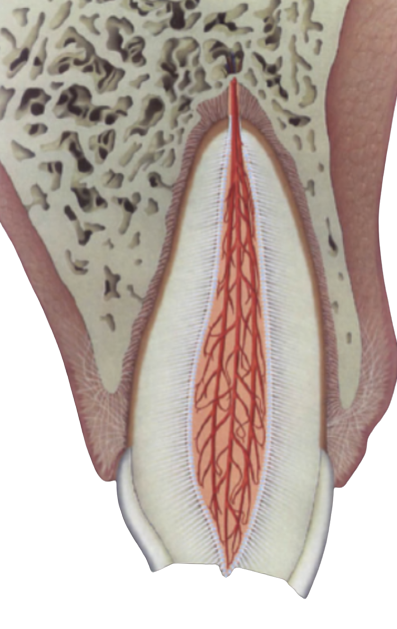
This is a crack that affects the enamel, dentin, and pulp of the tooth. It usually causes severe pain and bleeding from the exposed pulp. Your dentist may need to perform a root canal treatment to remove the damaged pulp and seal the tooth. Then, a filling or a crown will be placed to restore the tooth.
4. Horizontal Root Fracture:
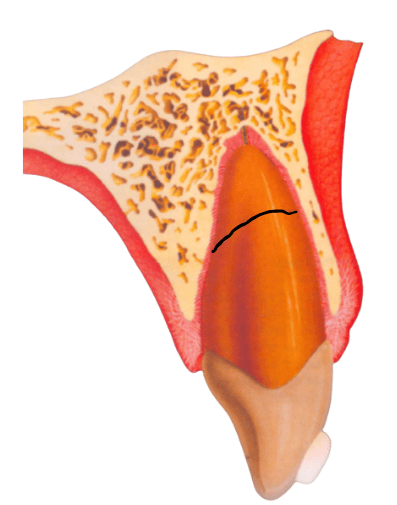
This is a crack that occurs at the root of the tooth, below the gum line. You might see your tooth becoming loose, moved, and bleeding from the gum line. Also, it may be very tender when you press or chew on it.
Your dentist may need to take an X-ray to diagnose such an injury. Depending on the location and extent of the fracture, your dentist may join your teeth together (tooth splinting) to stabilize the damaged tooth and allow it to heal. In some cases, a root canal treatment or an extraction may be necessary.
2. Vertical tooth cracks:
A vertical crack is a crack that runs along the length of the tooth, from the chewing surface to the root. Usually, the vertical fracture is invisible at first. It begins as a tiny line that slowly evolves and progresses over the years.This type of crack can affect any tooth in your mouth (back and front teeth). It is caused by excessive biting pressure, teeth grinding, or clenching. Dental procedures, such as root canals, crowns, or fillings, can also weaken the tooth and increase the risk of cracking or breaking. Here are the types of vertical tooth cracks:
1. Craze lines:
2. Fractured cusp:
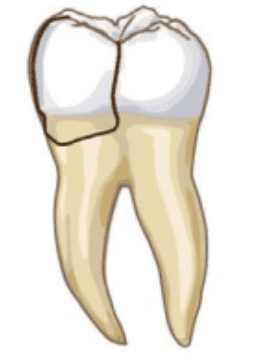
A fractured cusp is a crack that occurs around a dental filling or a weak point of the tooth. It usually does not affect the pulp. It may cause some discomfort when chewing or biting.
3. Cracked tooth syndrome:
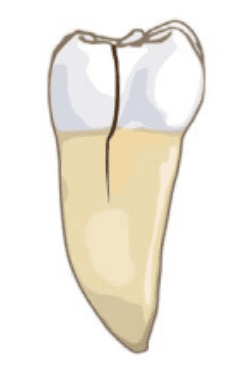
Cracked tooth syndrome is a condition where a crack extends from the chewing surface of the tooth toward the root. It may or may not reach the pulp, but it can cause intermittent pain and sensitivity, especially when biting on something hard or cold. It can also increase the risk of infection and tooth decay.
4. Split tooth:
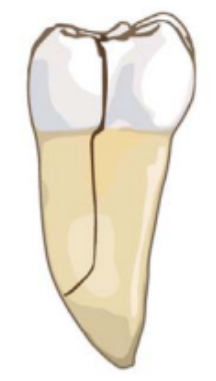
A split tooth is a severe type of fracture that splits the tooth into two or more segments. It usually affects the entire structure of the tooth, including the enamel, dentin, and pulp. It can cause severe pain, inflammation, and infection. It is often difficult to save a split tooth, and extraction may be necessary.
5. Vertical root fracture:
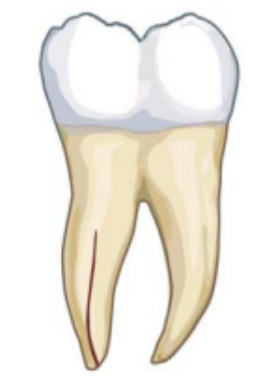
A vertical root fracture is a crack that starts from the root of the tooth and goes upward toward the crown. It may not cause any symptoms until it becomes infected or causes damage to the surrounding bone and gum tissue. It can be hard to detect and diagnose, and it often requires root canal treatment or extraction.
What are the first signs to look for?
It's not always easy to spot a cracked tooth immediately. Similar to how cracks form on a windshield gradually, cracked teeth can develop over time.The key is to identify and treat them as early as possible. The sooner you detect and treat them, the better the chance of saving your tooth and preventing further damage. Some of the first signs of a cracked tooth are:
- Pain when chewing or biting, especially when you release the bite.
- Sensitivity to heat, cold, or sweetness.
- Swelling of the gum around the affected tooth.
Sometimes, you may not feel any symptoms at all. It is only when the crack becomes infected or the tooth becomes loose that you may notice something is wrong. That's why regular visits to the dentist are essential to detect these cracks early and treat them before they worsen.
How does the dentist diagnose cracked teeth?
To diagnose a cracked tooth, your dentist will ask you about your dental history and symptoms. They will also examine your teeth carefully, using a magnifying lens or a microscope to look for any signs of cracks. Some of the methods your dentist may use to find a cracked tooth are:- Dental dye: This is a special liquid that stains the cracks on your tooth, making them more visible.
- Dental explorer: This is a metal instrument that your dentist runs over your tooth surface. If it catches on a crack, you may feel a sharp pain or discomfort.
- Bite test: Your dentist may ask you to bite down on something hard, such as a cotton roll or a wooden stick. If you feel pain when you release the bite, it may indicate a cracked tooth.
- Remove your crown or restoration: This allows your dentist to directly examine the tooth and assess the extent and nature of the crack.
- X-ray: This is an imaging test that can show the inside of your tooth and the surrounding bone. However, not all cracks are visible on x-rays, so your dentist may need to use other methods as well.
Can a cracked tooth be repaired?
If your dentist finds a cracked tooth, they will recommend the best treatment option for you, depending on the type and severity of the crack.The possibility of repairing a cracked tooth depends on where and how extensive the crack is. If the crack is confined to the top part of the tooth (the crown), there is a good chance that the tooth can be saved. However, if the fracture extends deeper into the roots, below the gum line, the chances of saving the tooth decrease. Some of the possible treatments are:
- No treatment: One treatment option is to simply monitor the tooth without any specific dental procedures. This is the case when the crack in the tooth is stable, does not cause pain, and there are no cosmetic concerns.
- Bonding: This is a procedure where your dentist applies a tooth-colored resin material to fill the crack and restore the shape and function of your tooth.
- Crown: This is a cap that covers the entire visible part of your tooth. It protects your tooth from further damage and improves its appearance.
- Root canal: This is a treatment where your dentist removes the infected or damaged pulp (the soft tissue inside your tooth) and seals the root canal with a filling material. This can save your tooth from extraction if the crack has reached the pulp or caused an abscess.
- Extraction: This is the last resort if your tooth is too severely cracked to be repaired. Your dentist will remove your tooth and replace it with an implant, bridge, or denture.
Complications of an untreated cracked tooth
If left untreated, the crack can get worse and cause more problems. Some of the possible complications of an untreated cracked tooth are:- Infection: Bacteria can enter the crack and infect the pulp (the soft tissue inside the tooth) or the gums. This can lead to pain, swelling, abscesses, and even tooth loss.
- Decay: The crack can expose the dentin (the layer under the enamel) to plaque and acids. This can erode the dentin and cause cavities or further damage to the tooth structure.
- Splitting: The crack can extend to the root of the tooth and split it into two or more pieces. This can make the tooth unstable and require extraction.
- Loss of function: The cracked tooth can affect your ability to chew, speak and smile. It can also interfere with your bite and cause jaw problems.
How to prevent cracked teeth?
Cracked teeth are a common dental problem that can cause pain, sensitivity, and infection. They can also lead to tooth loss if left untreated. Fortunately, there are some ways to prevent cracked teeth and protect your smile.- Avoid chewing on hard objects: Refrain from chewing on hard items like ice, candy, nuts, or pens. These objects can exert excessive pressure on your teeth, leading to fractures. Instead, consider substituting them with sugar-free gum or mints.
- Stop teeth grinding: Nighttime teeth grinding, also known as bruxism, can weaken your tooth enamel and make them more susceptible to cracking. If you grind your teeth, consult your dentist about using a custom-fitted night guard to protect your teeth from grinding forces.
- Wear a mouth guard for sports: When engaging in sports activities, especially contact sports like football, hockey, or boxing, wearing a mouth guard is crucial. A mouth guard cushions the impact of blows to the mouth, reducing the risk of cracked teeth or tooth loss. You can obtain a mouth guard from your dentist or purchase one from a sports store.
- Maintain good oral hygiene: Taking care of your teeth and gums is vital in preventing various dental issues, including cracked teeth. Brush your teeth twice a day, floss daily, and make regular visits to your dentist. These practices help maintain the health and strength of your teeth while enabling early detection and treatment of any cracks or decay.
By following these tips, you can reduce the risk of cracked teeth and enjoy a healthy smile for life.
- Endodontic Diagnosis Pathology and Treatment Planning Mastering Clinical Practice by Bobby Patel
- Vertical root fractures and their management https://www.ncbi.nlm.nih.gov/pmc/articles/PMC4001262/
- Prevalence of Traumatic Dental Injuries to Anterior Teeth in 8–12-year-old Schoolchildren of Patiala City, Punjab, India: An Epidemiological Study https://www.ncbi.nlm.nih.gov/pmc/articles/PMC6710947/
- International Association of Dental Traumatology - DENTAL TRAUMA GUIDELINES https://www.iadt-dentaltrauma.org/pdf
- Savoir détecter les fêlures et les fractures verticales https://www.sop.asso.fr/admin/documents/supportfic/FDC0000009/.pdf
- Vertical root fractures and their management https://www.ncbi.nlm.nih.gov/pmc/articles/PMC4001262/
